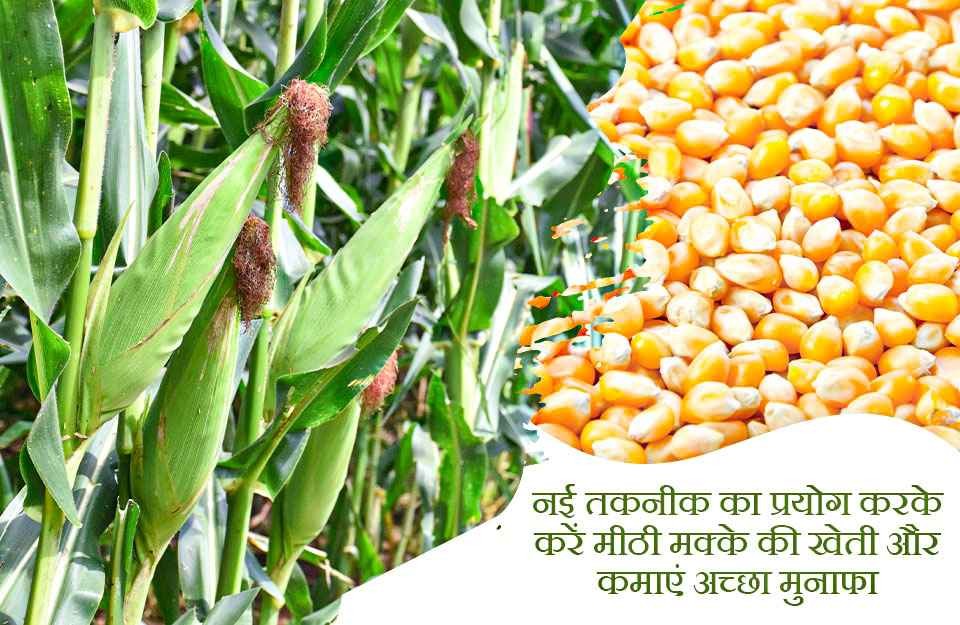
Maize is not only recognized as a staple food crop in India but also hailed as the queen of food grains worldwide due to its higher production capacity compared to other crops. In terms of food grains, Maize ranks third in production. It is utilized in the form of fodder and grains. The variant known as "Baby Maize" is utilized as a vegetable, with its green cobs being enjoyed after roasting. Maize cultivation primarily occurs during the monsoon and winter seasons.
Maize is a nutritious food consumed in grain form. It is cultivated for poultry feed, glucose, starch, and Maize flakes. Maize bread is a winter delicacy. Approximately 80% of Maize cultivation in India takes place during the monsoon season. Following the United States, China, Brazil, and Mexico, India ranks fifth in Maize production. Maize is cultivated in states such as Uttar Pradesh, Rajasthan, Karnataka, Himachal Pradesh, Andhra Pradesh, Jammu and Kashmir, and the northeastern states of India. Nearly 70% of Maize cultivation in India occurs in stressful conditions. More than 1000 products are derived from Maize, which is used in various ways.
Maize cultivation should commence after June 15th. Deep plowing of the soil should be carried out using a moldboard plow or cultivator. Sowing during summers yields more benefits and higher yields. Immediate ridging should be performed to retain moisture in the field. The soil loosens after plowing and should also be plowed using a disk harrow. In areas where the soil has saline water problems, Maize should be sown on the edges of ridges rather than in the middle. Maize should be sown on the southern part of the eastern-western ridges. The cupping England plate or roller-type seed metering method is suitable. Planters should be used for sowing, as they help in placing seeds and fertilizers accurately. Sowing for fodder should be done using the seed drill method, and it should be done at the correct distance.
Maize should be sown in the last week of June and the first week of July during the monsoon, and in the second fortnight of October during winter, and mostly in the second fortnight of March. Sowing of Maize should be done in rows, with a distance between rows of 50-60 cm and between plants of 25-30 cm.
In this technique, Maize is sown in rows using a tractor reaper-cum-drill. This method efficiently utilizes space and resources, saving both fertilizer and water while minimizing the need for weeding. Moreover, it is also employed for seed production, aiming to ensure the availability of high-quality seeds. It's advisable to plant Maize in the northern part of the east-west direction to avoid direct exposure to the sun's rays on the soil.
Improved Varieties of Maize: Notable varieties of Maize include Papakarn (V.L. Papakarn Pearl and Jawahar Amber), HQPM (H.Q.P.M.-1 and 5, Shaktiman-1, 3, and 4, Shakti-1 Complex, Vivek HQPM-7), Baby Maize(V.L. Baby Maize-1 and H.M. 4), and Sweet Maize(Vinorange Priya and Madhuri H.S.C.-1 Composite).
Climate and Soil: Optimal sunlight is crucial for a successful Maize yield. A temperature ranging between 20-25 degrees Celsius is conducive to Maize growth, while temperatures around 9-10 degrees Celsius can affect germination. Well-drained loamy soil with adequate aeration and moisture retention, maintaining a pH level between 6.5 to 7.5, is ideal for Maize cultivation.
Irrigation for Maize: Maize crops require regular irrigation, especially during germination and tasseling stages. Depending on weather conditions, Maize typically needs irrigation approximately 4-5 times from planting to ear emergence, with each irrigation session ensuring a water depth of 5-6 cm. Maize does not require irrigation during the rainy season, but proper drainage is essential to prevent water logging. In flat fields, furrow irrigation method should be employed for efficient water drainage.
Nutrient Management in Maize Crop: Before planting Maize, soil testing should be conducted to ensure optimal yield. About 10-12 tons of farmyard manure per hectare should be incorporated into the field 15 days prior to planting. Additionally, 150-160 kilograms of nitrogen, 60-70 kilograms of phosphorus, and potassium should be applied. During planting, 10% of nitrogen should be provided, divided into four doses. Twenty percent should be applied when four leaves emerge, thirty percent when eight leaves emerge, thirty percent at the time of flowering, and ten percent during grain formation.
Significance and Uses of Maize: Baby Maize is a nutritious and delicious food that remains unaffected by pesticides due to its tightly adhering leaves. It contains high levels of phosphorus, carbohydrates, calcium, protein, iron, and vitamins. Maize is easily digestible and can be enjoyed roasted or cooked. It is used in various dishes such as sabzi, pakoras, bhujia, salads, soups, kheer, raita, pickles, halwa, candies, jams, barfi, etc., which have a high demand in markets, enabling farmers to earn higher profits.
Harvesting and Yield: Maize can be harvested when the leaves of the Maize or cobs start turning yellow. During harvesting, the leaves should not be removed from the top. In the summer season, Maize should be harvested 24 hours before silk emergence each day.
Crop Protection: